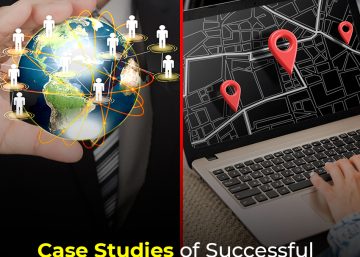
Introduction
Augmented & Virtual Reality technologies are increasingly becoming embedded in many aspects of everyday life. After Entertainment (Movies and Gaming), Healthcare, Defense, and Aerospace industries. The Marketing function is one of the biggest adopters of these technologies. The marketing and sales funnels have long been closely connected; more so since the advent of Digital Marketing. In this blog let’s explore How is AR/VR in marketing increasing sales.
Turning Conventional Marketing Material Into Digital Playgrounds
Marketers use Augmented Reality to engage with audiences more deeply than in the past. One of the most effective ways is to use traditional marketing materials like brochures, flyers, catalogs, billboards etc. as entry points into a limitless cyber world. This can be done through a QR code, Digital Menu or similar. The basic idea is to engage a viewer to perform some action. The cue can be based in promise of great return, be it of information, monetary benefit, intellectual curiosity, or simply fun.
Once the action is fulfilled. The brand can activate audio visual content, interactive experiences, games, or other ways to keep the audience interested. Meanwhile, the brand benefits by tracking and analyzing audience behavior and preferences within that digital playground.
Improving Transparency with “Better Than Real” VR
AR & VR can also improve transparency with the customer. For example, the Auto manufacturer BMW launched several apps1 including Visualizer, an AR app to scan brochure pages and launch different models of the BMW 7 Series cars, change colors, view them in different settings including on the road or in the driveway, etc., take photos and share them. The Vision Next 100 VR App, also by BMW, lets clients build out their cars from the frame up.
Then the client can enter the app’s VR mode and view the interiors. The cool thing is, BMW built the 3D model of the interiors so realistically that a client can zoom in via VR down to the individual stitch, recreated in painstaking detail to exactly match the real thing. That’s a MUCH closer look than anyone could achieve even in real life! That’s the thing: the tech is there. It is up to brands whether they use it to promote their products with authenticity or euphemism.
Try-Before-You-Buy Applications
The biggest commercial applications of AR & VR are undoubtedly the “in-use visualizers”. These include various types of try-on apps, like Sephora’s “Virtual Artist”, L’Oreal’s Modiface, Amazon Salon, Adidas Sneakers, Caratlane’s virtual jewelry app, etc. Most of these apps either use profiling or face tracking technologies, which while not quite perfect yet, give users some experience of what the item would like on their bodies. No doubt, this tech will keep getting better.
An entirely different technology called LiDAR is used in apps like Ikea’s Studio app. Here the device (phone or tablet) first creates a digital 3D map of the room. Then the user can fit out the digital map with high quality 3D renderings of rugs, couches, curtains etc. The result is very realistic. Both above virtual try-ons are excellent for sales funnels in a couple of different ways. For one, clients can outright purchase the items online. The other use is to shortlist a few items to try-on in person. This last step is quite important for high value items like jewelry, luxury goods, etc.
B2B Solutioning Visualization
Most of the applications above are B2C or D2C, but AR & VR can play an important role in B2B applications as well in construction, engineering projects, system demos, etc. An obvious application could be to help investors, customers, and partners visualize what a finished building will look like right at the site, or how a proposed windfarm will impact known migratory bird patterns, etc.
This is also really useful for software applications. In a VR environment, clients can review Digital Control System screens and equipment layout for control rooms in industrial environments to suggest early changes or modifications. The B2B environment also offers the chance to create much richer AR & VR experiences since dedicated experience rooms can be built at a relatively minor expense compared to the major project cost.
Conclusion
AR & VR are improving by the day. This includes the technology, products based on that tech, the delivery channels, and the hardware. Both technologies have long been seen as potentially taking commerce into a whole different dimension. That is now starting to happen, and in a few years will change the way we make buying decisions as consumers in B2C settings, and as decision makers in B2B.



